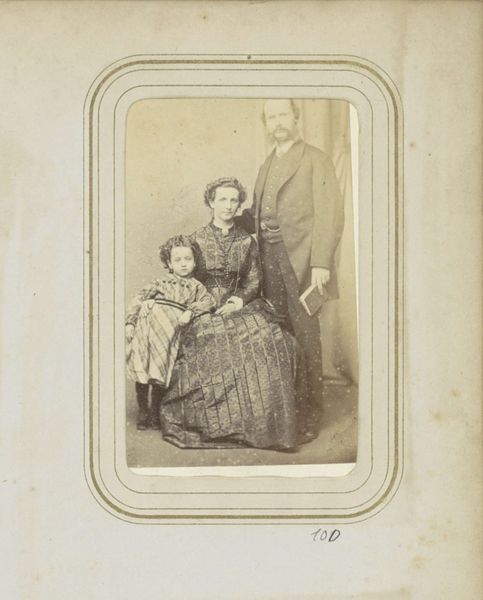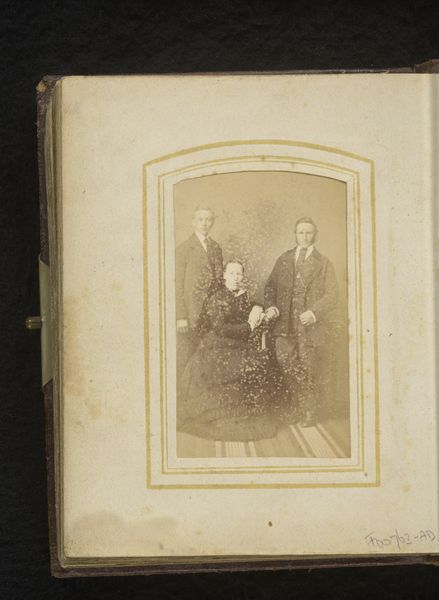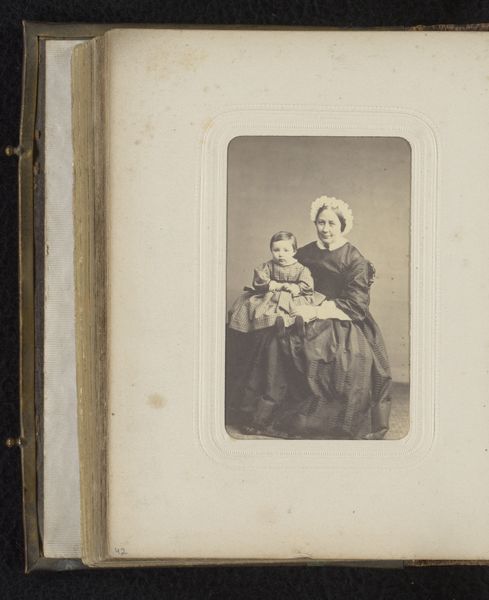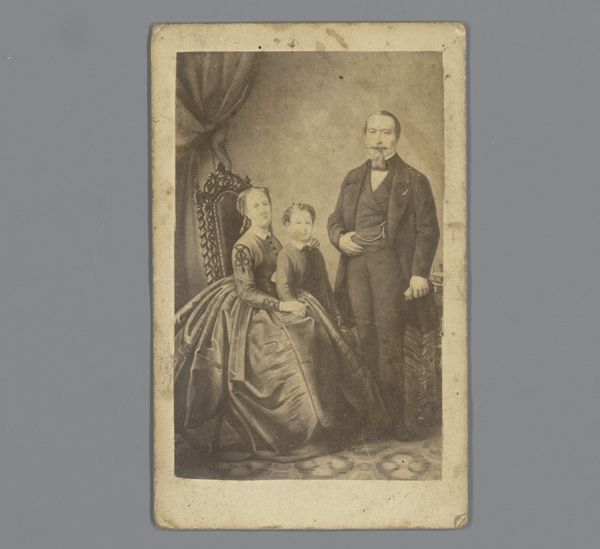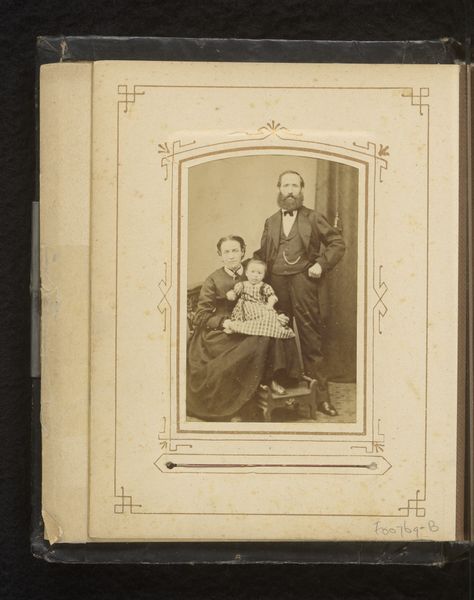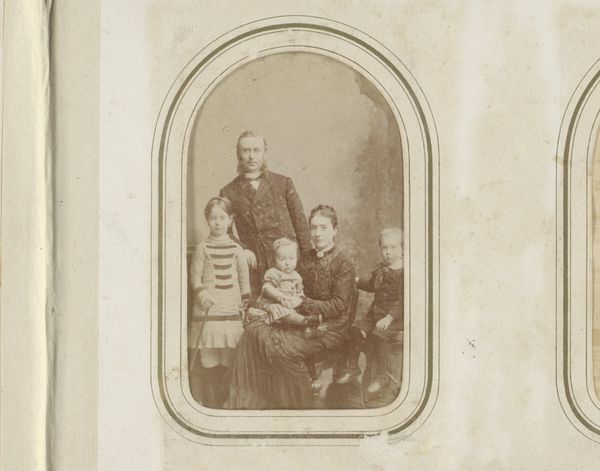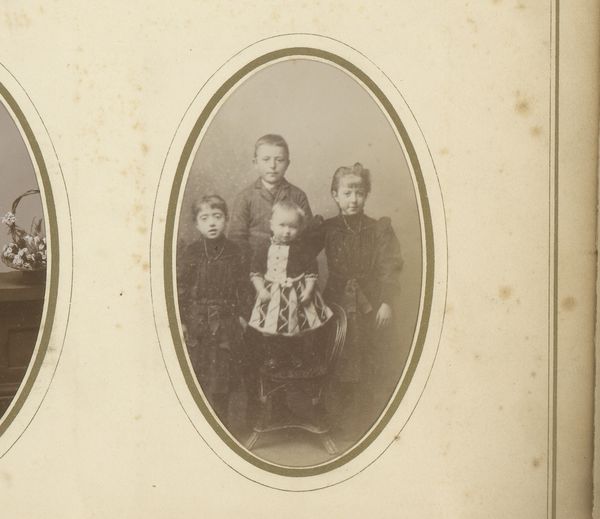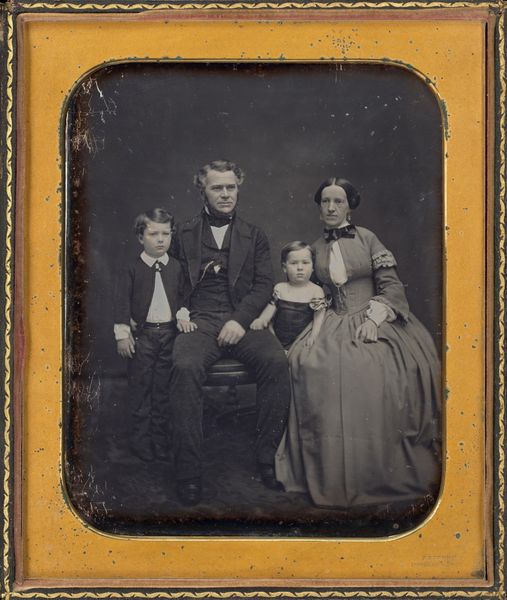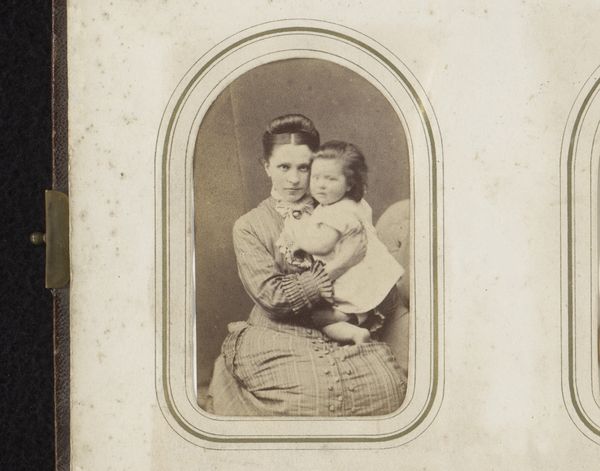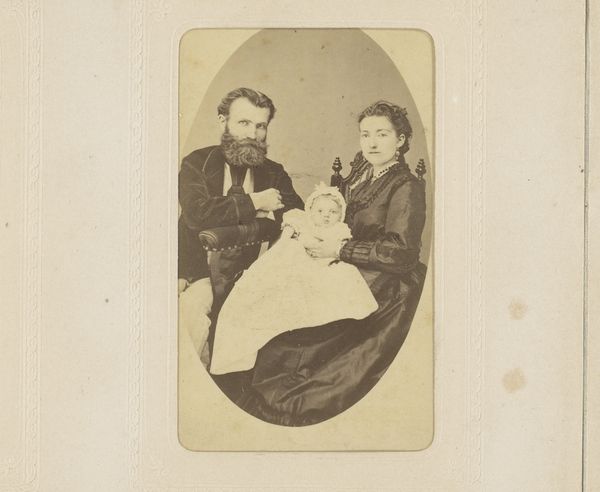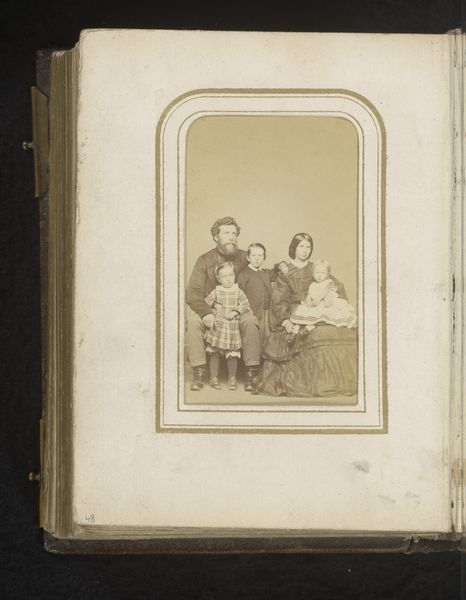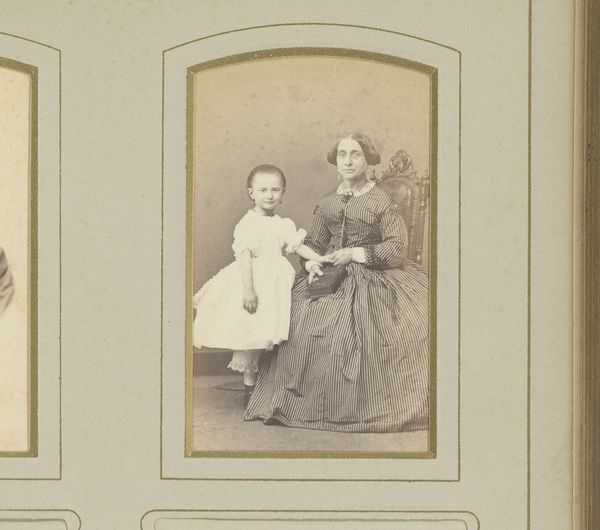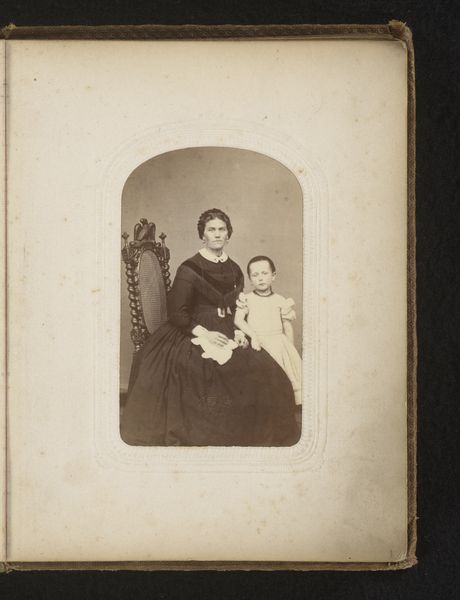
Dimensions: height 83 mm, width 51 mm
Copyright: Rijks Museum: Open Domain
Curator: This is “Family Portrait with Father, Mother and Daughter,” a daguerreotype from sometime between 1861 and 1866. It's currently held here at the Rijksmuseum. Editor: The picture’s making me feel a little…wistful? It's small, but the formality of the poses and clothing hints at a world of unspoken expectations. Curator: Absolutely. These early photographic portraits were such precious commodities. Each pose, each prop had to communicate status and respectability. Note how the father, presumably the head of the household, anchors the composition. Editor: Yes, the father is on the right, positioned at a diagonal. What I am finding striking is how the subjects' gaze is fixed, as if confronting an uncertain future. Do you think that has anything to do with that specific period? Curator: Inevitably. This was a time of great social change, technological advancement, and evolving ideas about family roles. But look at the technical aspects: the subdued tones, the meticulous details captured in the faces... a poignant reflection of Victorian ideals frozen in time. Editor: Speaking of capturing details, the way light hits the ruffled dress of the daughter on the left... almost ethereal in contrast to the solemnity surrounding her. Curator: That is an incredible observation! I can also see how the materiality contributes significantly to how we interpret this artwork. Daguerreotypes involved a painstaking process. There's an inherent value projected onto the object itself. It becomes almost a relic. Editor: More like a tiny time capsule—carrying echoes of vanished lives! I can also relate that the way the sitters seem stiff is due to the exposure time to properly record such intricate details, right? Curator: Precisely. Exposure times meant sitters had to remain still for extended periods, resulting in the stoic expressions and stiff postures we observe. This immobility contrasts sharply with our modern experience of the instant selfie. Editor: And that's precisely why it continues to resonate. The daguerreotype technique invites us to reflect on the ephemeral nature of existence and to appreciate the unique ability of early photography to immortalize a specific point in time. Curator: Well said! A profound portrait not just of three individuals, but of a pivotal moment in the evolution of self-representation and technology.
Comments
No comments
Be the first to comment and join the conversation on the ultimate creative platform.
